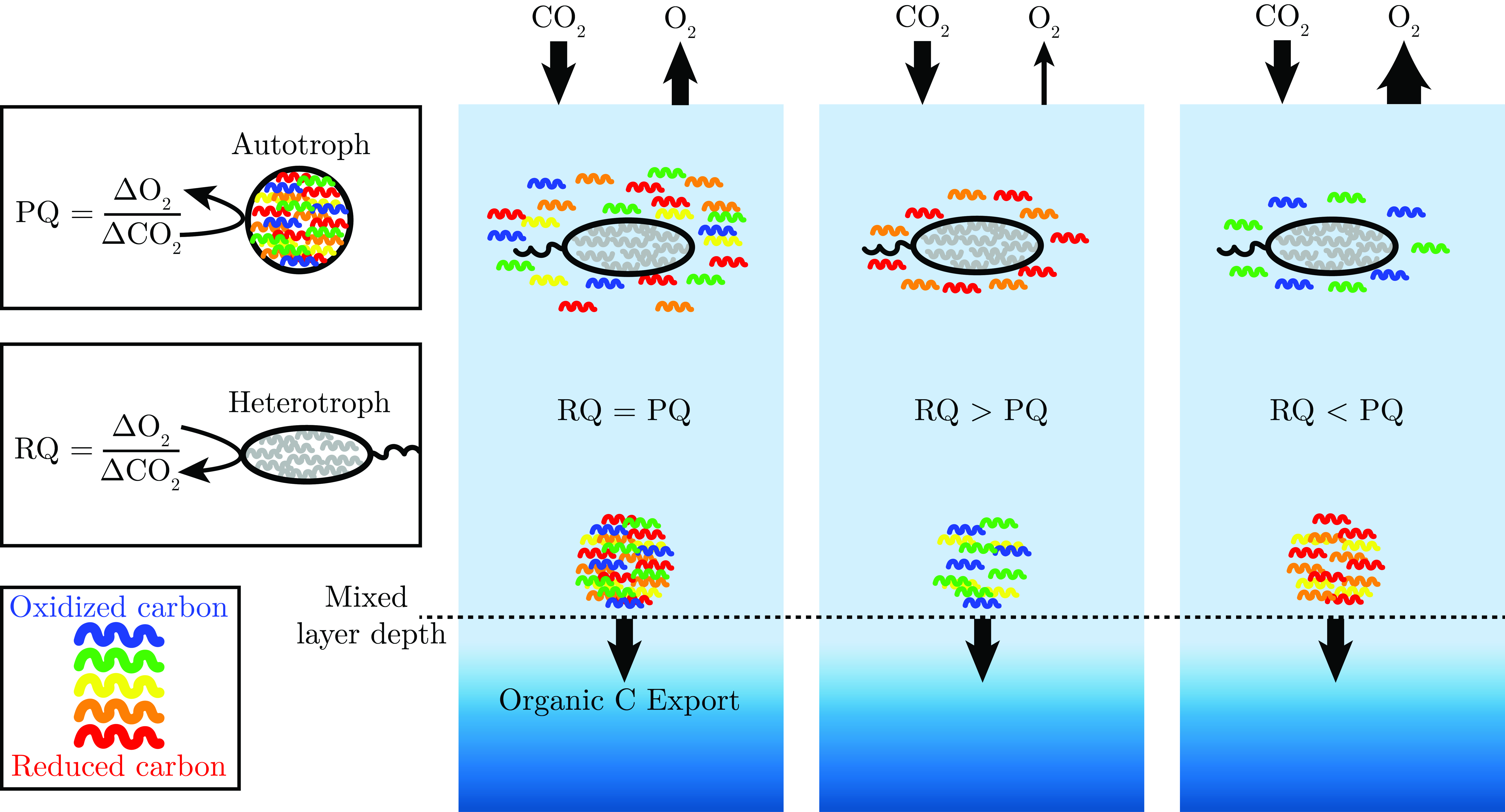Redox-selective remineralization decouples marine carbon and oxygen cycles
The global biogeochemical cycles of oxygen and carbon are coupled by the stoichiometry of photosynthesis and respiration (the photosynthetic quotient PQ and respiratory quotient RQ). A widespread assumption, that these stoichiometric ratios counter-balance one another, provides foundation for a key concept of biogeochemistry - that carbon sequestration is balanced by a surplus of oxygen to the atmosphere. But, what if that assumption was wrong?
In a recent study on the caloric content of sinking particles in the North Pacific Subtropical Gyre, the energy content of sinking particles decreased faster than the mass of those particles, suggesting that consumers were selectively feeding on the more energy rich (reduced compounds like lipids) components, leaving less energy rich (oxidized compounds like organic acids) components behind. Because the redox state of organic matter dictates the amount of oxygen needed for respiration (RQ), this preferential remineralization of reduced organic substrates results in relatively more oxygen consumption than would be expected if consumers were feeding on the bulk material. Importantly, this process would also consume more oxygen than the oxygen generated by phytoplankton producers, on a per carbon basis (PQ).
With a simplified model, we derived an equation to describe how a mismatch in PQ and RQ modulates the exchanges of oxygen and carbon dioxide with the atmosphere which result from sinking detritus:
\[E = 1 - \frac{PQ}{RQ} + \frac{NCP_{O2}}{NPP_{O2}}\]where E is the export ratio (the ratio of carbon export to net primary carbon production), $NCP_{O2}$ is net community oxygen production (gross oxygen production less total respiratory losses), $NPP_{O2}$ is net primary oxygen production (gross oxygen production less autotrophic respiration).
 Figure caption: Autotrophs synthesize organic carbon through the reduction of CO2, yielding O2 at a ratio PQ. This organic carbon spans a range of redox states, from relatively oxidized organic acids (blue components) to relatively reduced lipids (red components). Heterotrophs oxidize this organic matter back to CO2, consuming O2 at a ratio RQ. Heterotrophic biomass components are shaded in grey to provide contrast, but note that they too contribute through mortality to the redox spectrum of the detritus. Non-selective remineralization results in a balance RQ = PQ, confirming our intuition of the proportionality of organic carbon export, CO2 influx, and oxygen efflux. If, however, heterotrophs favor relatively reduced organic carbon (red and orange components; RQ > PQ) or relatively oxidized organic carbon (blue and green components; RQ < PQ), the oxygen exchanged to the atmosphere will be altered.
Figure caption: Autotrophs synthesize organic carbon through the reduction of CO2, yielding O2 at a ratio PQ. This organic carbon spans a range of redox states, from relatively oxidized organic acids (blue components) to relatively reduced lipids (red components). Heterotrophs oxidize this organic matter back to CO2, consuming O2 at a ratio RQ. Heterotrophic biomass components are shaded in grey to provide contrast, but note that they too contribute through mortality to the redox spectrum of the detritus. Non-selective remineralization results in a balance RQ = PQ, confirming our intuition of the proportionality of organic carbon export, CO2 influx, and oxygen efflux. If, however, heterotrophs favor relatively reduced organic carbon (red and orange components; RQ > PQ) or relatively oxidized organic carbon (blue and green components; RQ < PQ), the oxygen exchanged to the atmosphere will be altered.
